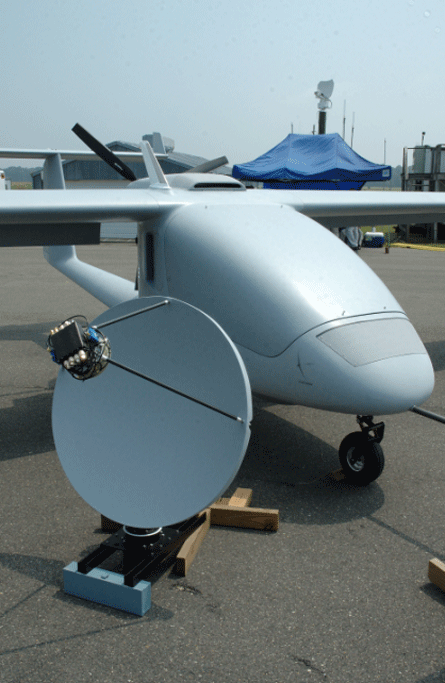Texas-based Aerocross Systems has unveiled a large payload capacity unmanned air vehicle (UAV) being developed for the US Air Force as a potential airborne telemetry relay asset.
The UAV, designated Echo Hawk, is expected to make its first fully autonomous flights during the first quarter of 2008, although it has already flown in a manned configuration.
 |
|---|
Echo Hawk unveiled at USN - Association for Unmanned Vehicle Systems International UAV flying demonstration at Webster Field, Maryland |
Echo Hawk is being developed on behalf of the USAF's 46th test wing at Eglin AFB in Florida as a potential replacement for manned telemetry relay aircraft and mobile ground stations in supporting weapon system trials. In that role it will carry a 1m (3ft)-diameter steerable tracking antenna in its forward payload bay.
Development of the type has been under way since 2003. Aerocross unveiled its prototype aircraft on 6 August at the USN - Association for Unmanned Vehicle Systems International UAV flying demonstration at Webster Field, Maryland.
 |
|---|
A key configuration change includes the closing over of the cockpit bay |
The UAV is derived from the Spanish Colyaer Martin 3 S100 light sports aircraft. The first kit airframe arrived in the USA 18 months ago for conversion by Aerocross.
Key configuration changes include the closing over of the cockpit bay, addition of a lower fuselage blister to facilitate antenna movement and the addition of winglets. Wingspan is 12.6m, compared with 10.3m in the standard manned Martin S3 kit configuration, while the fuselage length remains the same at 5.85m.
The existing Rotax 912 engine has been replaced by a Rotax 914 constant speed model with this also driving an alternator providing 2,800w of power.
The modified aircraft has an endurance of 10h, with a typical mission expected to require at least 8h on station. Total fuel capacity is 190 litres (50USgal).
Maximum takeoff weight is 670kg (1,475lb), with a total payload capacity of 192kg.
The type is remotely piloted with limited autonomy assistance provided by an Athena Guidestar system supporting navigation. The piloting station incorporates a synthetic vision support system and a head-up display.
Funding for the development has been provided via the US Department of Defense's small business innovative research programme, with initial funding worth $94,000 awarded in October 2003. Phase two awards for the research programme worth $600,000 were secured in August 2004, with a follow-on award of $150,000 in December 2005.
Aerocross was formed in 2002, with both of its directors having backgrounds in military testing in addition to being kit aircraft enthusiasts. The company is based in Fairfax, Texas.
Aerocross president Tam Pho says the large payload volumes on the existing UAV derivative may be attractive to both military and non-military customers. "Our goal is to make it more accessible to other users," he says.
The company has also looked at development of other UAV derivatives of the same basic air vehicle, including a UAV seaplane or amphibian, with these respectively based on the Colyaer Gannet S100 and Freedom S1 manned types. "The modifications that we have done would apply directly across," says Pho, given the close family lineage between all three designs.
Flight's UAV Directory
Source: FlightGlobal.com
















